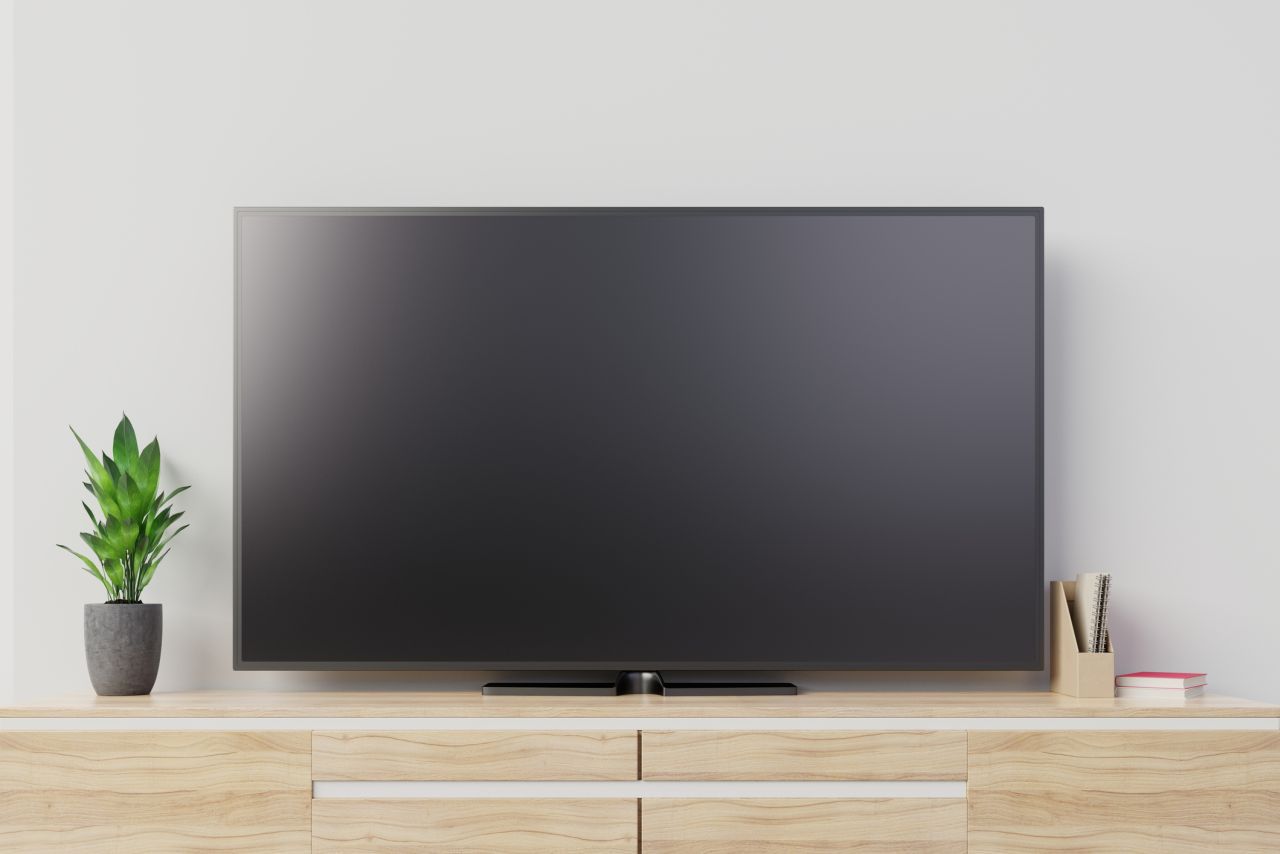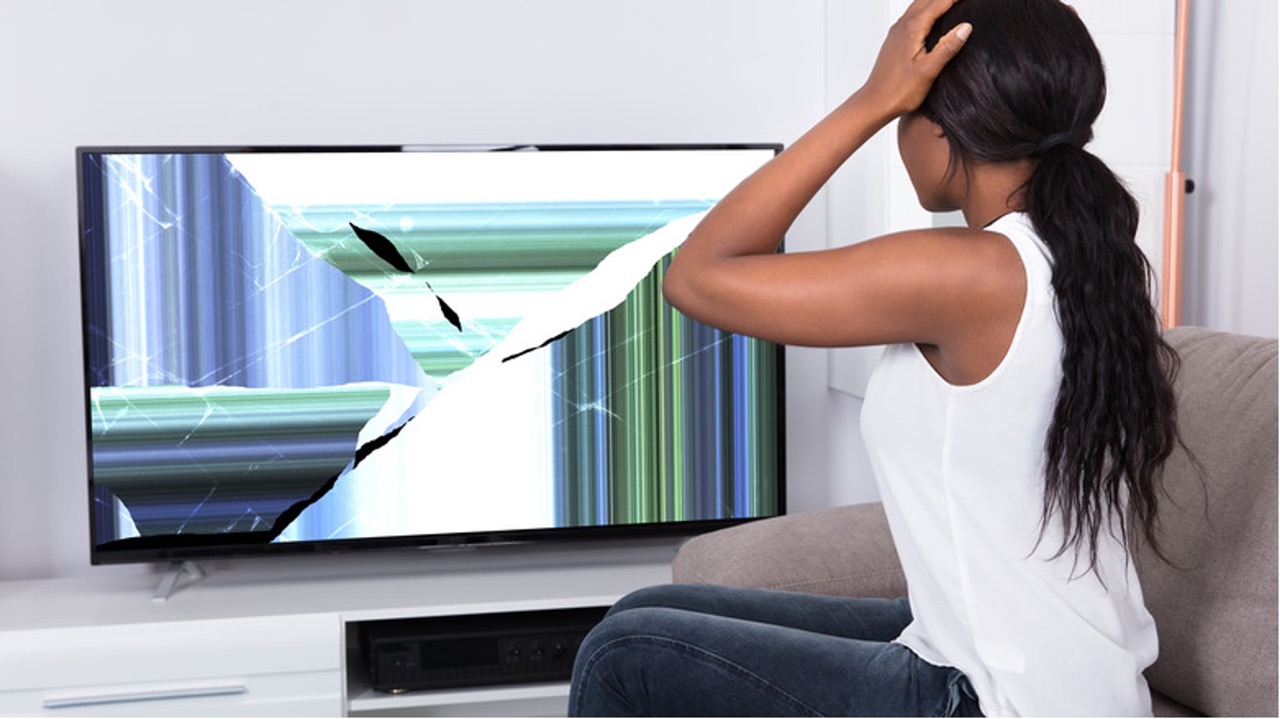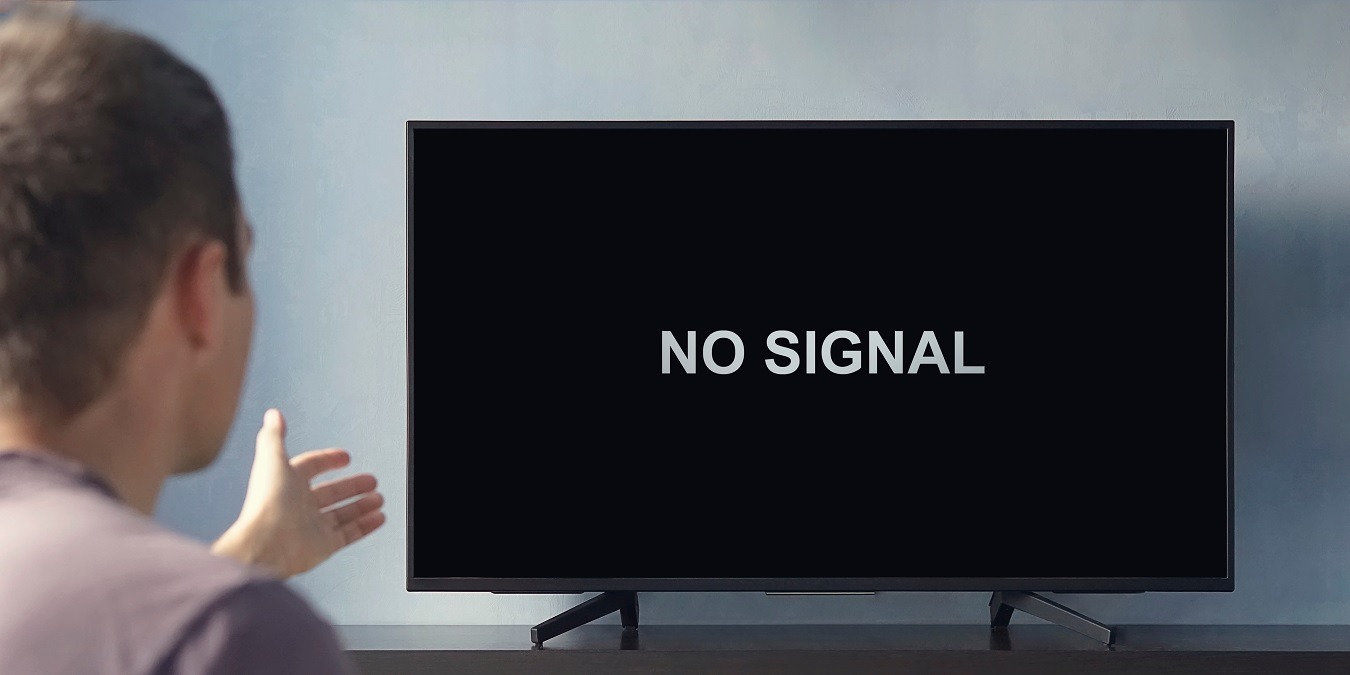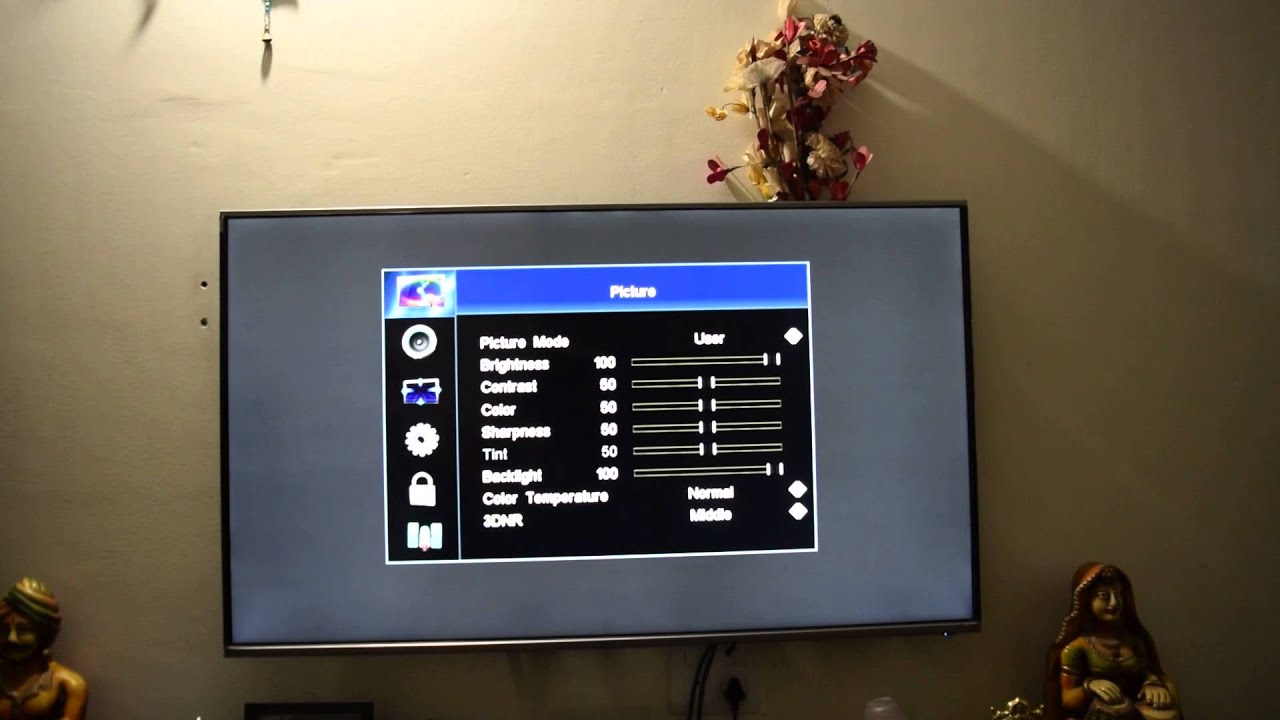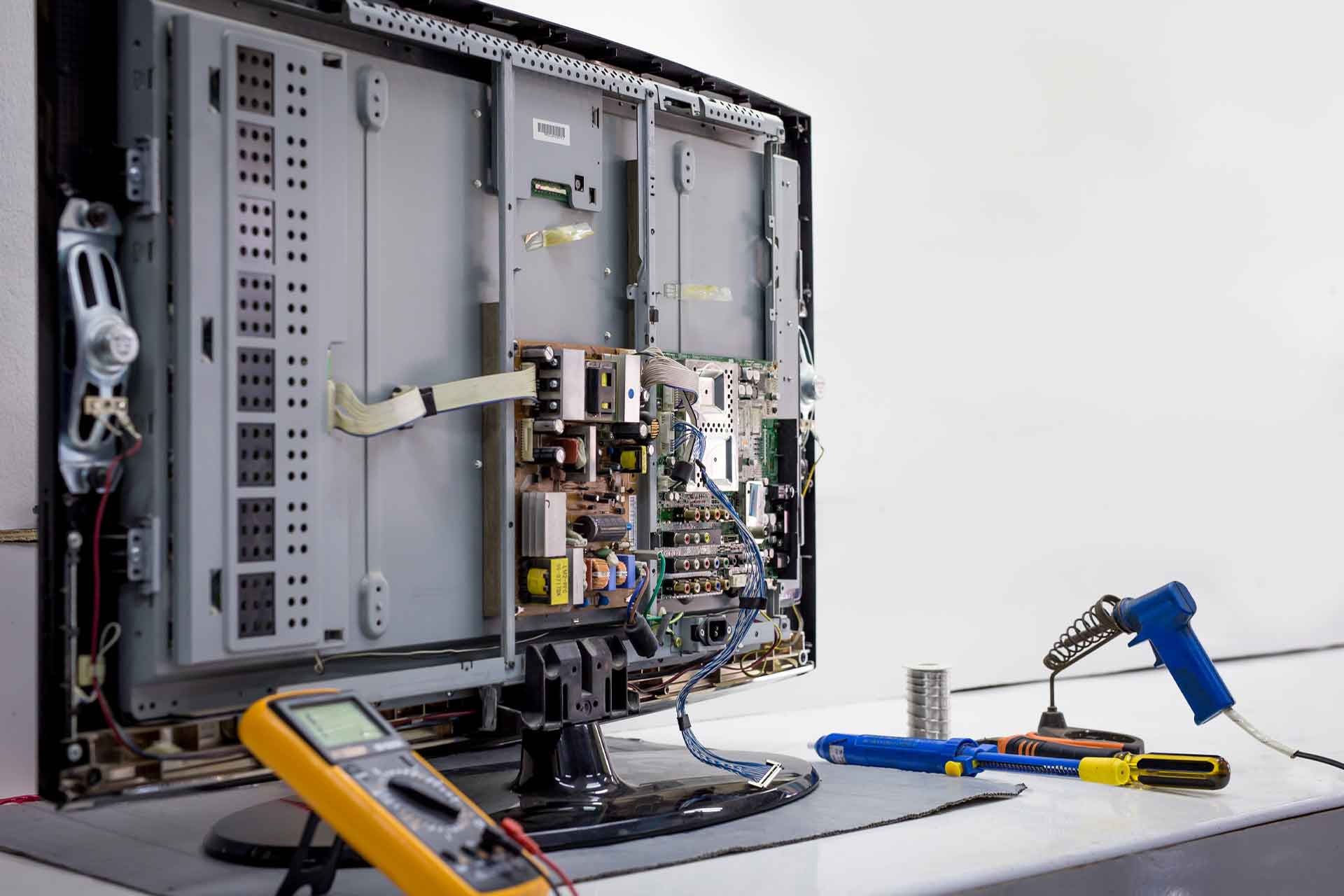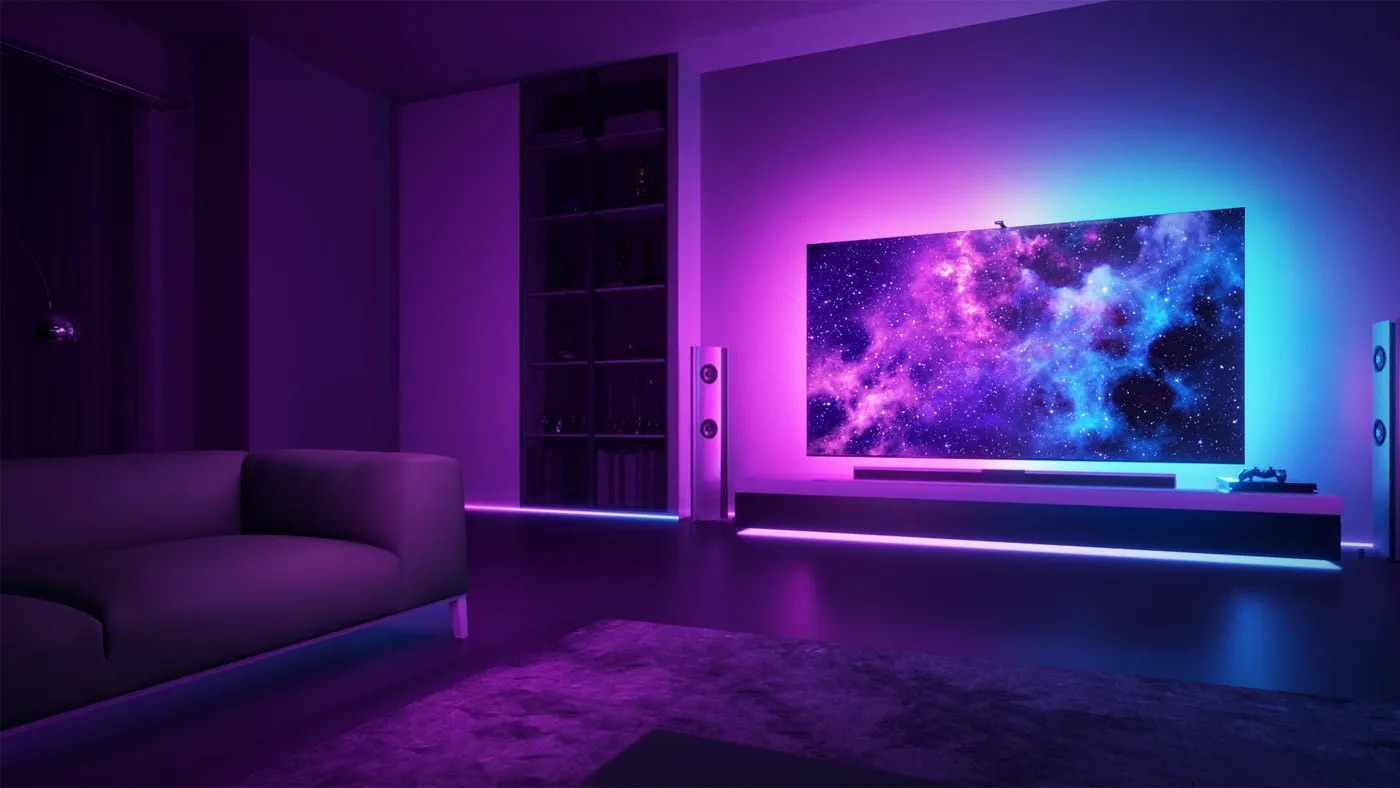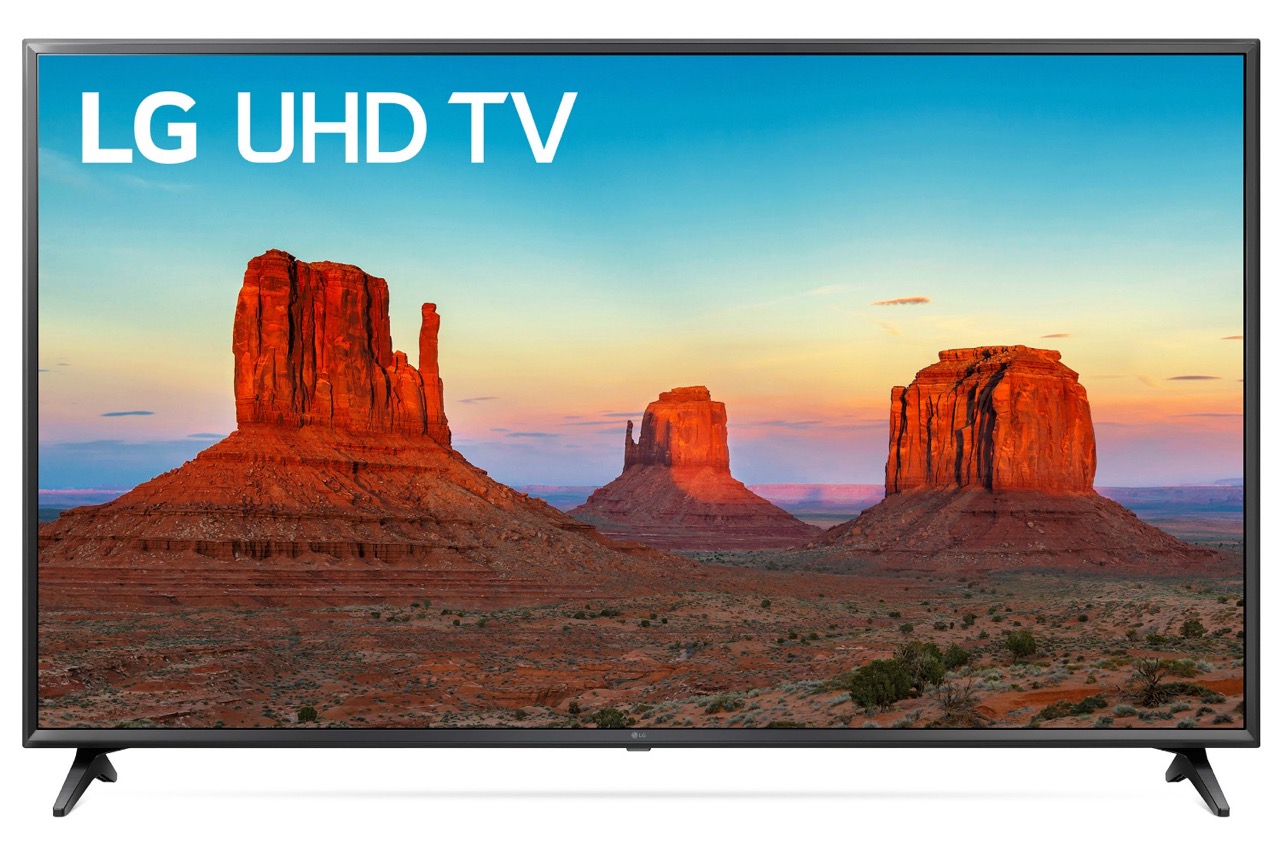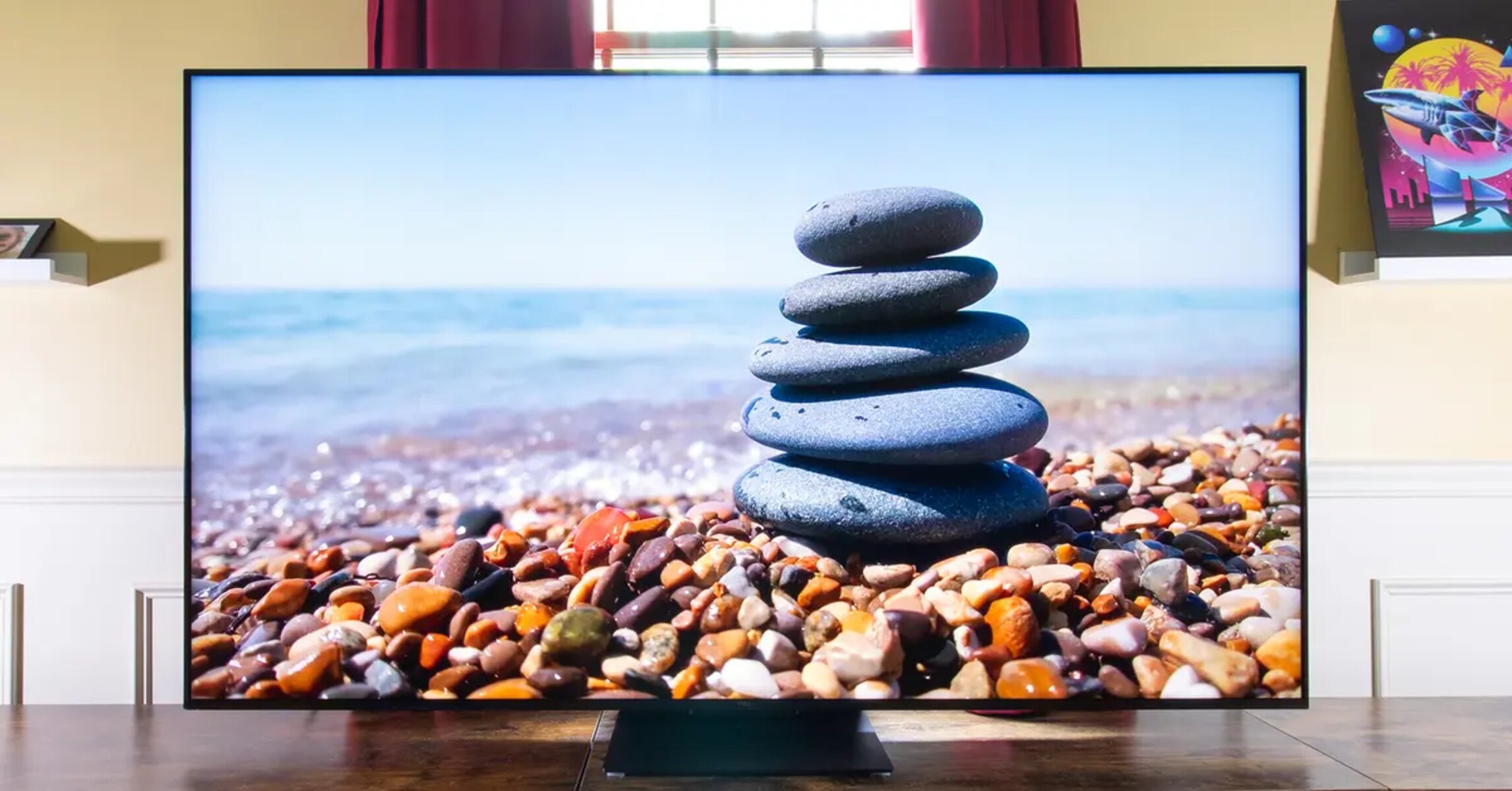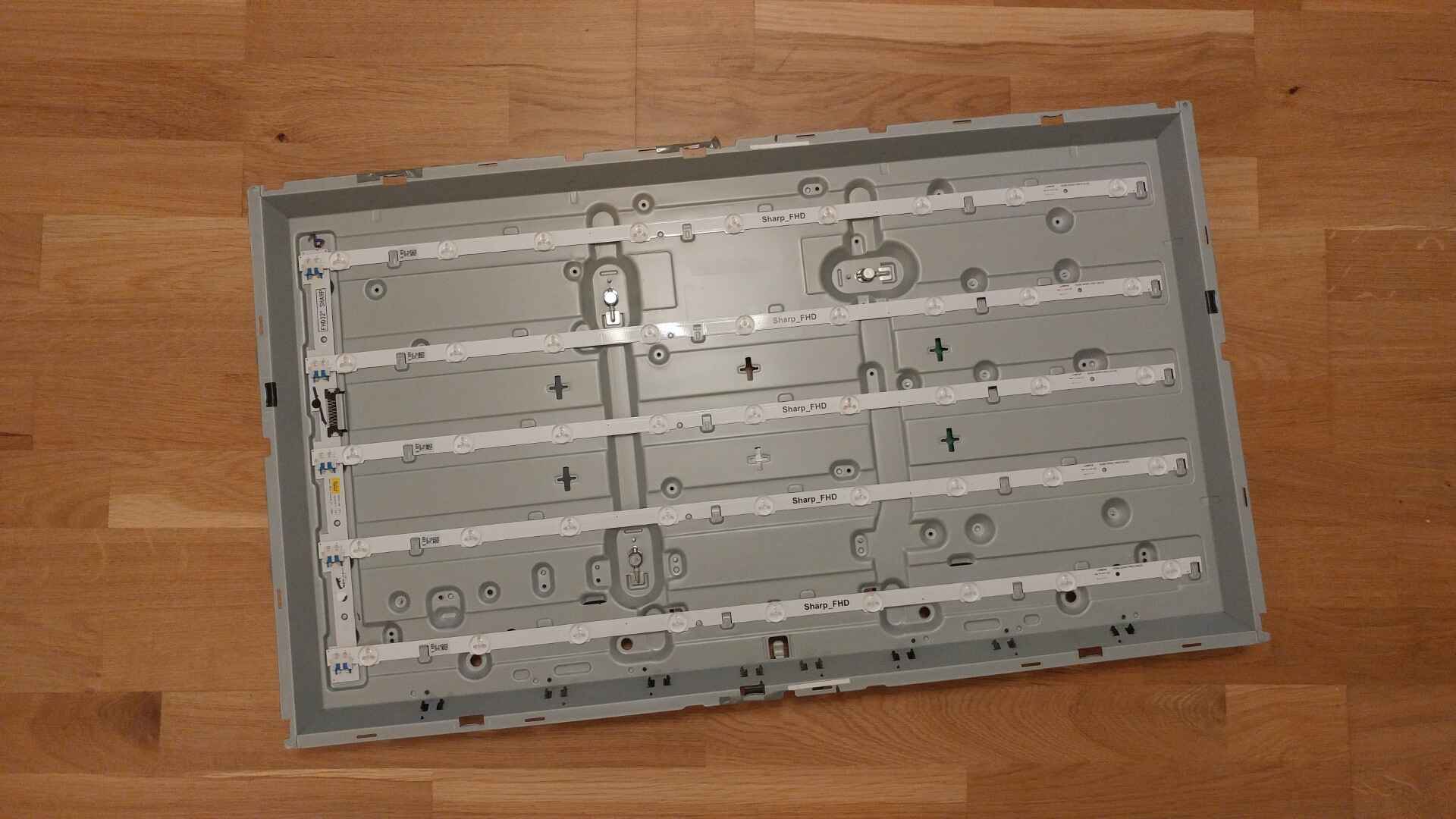Common Causes of Backlight Bleed
Backlight bleed is a common issue that can affect LED TVs, causing uneven lighting and reducing the overall viewing experience. It occurs when the backlight of the LED panel seeps through the edges or corners of the screen, creating brighter areas or patches. Understanding the causes of backlight bleed can help you identify and rectify the problem effectively. Here are some common causes of backlight bleed:
- Manufacturing Defects: In some cases, backlight bleed can be attributed to manufacturing defects in the TV panel. Poor quality control during the production process can result in improper alignment of the backlight layer, causing light leakage.
- Thin TV Bezels: TVs with thin bezels are more prone to backlight bleed. The slim design may put pressure on the LCD panel, leading to light dispersion along the edges. This can be more noticeable in dark scenes or when viewing content with black borders.
- Uneven Pressure: Uneven pressure on the LCD screen can cause backlight bleed. This can occur during shipping or if the TV is mishandled during installation. Excessive pressure applied to one side of the screen can disrupt the backlight layer, resulting in light leakage.
- Extreme Temperature Changes: Extreme temperature changes can also contribute to backlight bleed. Rapid variations in temperature can affect the LCD panel, causing it to expand or contract. This expansion and contraction can lead to misalignment of the backlight layer, causing light to leak through the edges.
- Poor Quality or Damaged Components: Low-quality or damaged components, such as the backlight diffuser, can contribute to backlight bleed. If the diffuser is not properly manufactured or has incurred damage, it may fail to evenly distribute light across the screen, leading to areas of excessive brightness.
Identifying the cause of backlight bleed is crucial in choosing the appropriate solution for fixing the issue. By understanding these common causes, you can take the necessary steps to address backlight bleed effectively and restore optimal picture quality to your LED TV. So let’s dive into the next section to learn techniques for fixing backlight bleed.
Understanding Backlight Bleed
Backlight bleed is a phenomenon that occurs in LED TVs, where the backlight behind the screen unevenly seeps through, resulting in areas of excessive brightness or light patches along the edges or corners of the display. It can be a frustrating issue for viewers, as it compromises the overall picture quality and can detract from the immersive viewing experience.
To understand backlight bleed better, it’s important to know how LED TVs work. LED TVs have a backlight layer located behind the LCD screen, which illuminates the display and enhances the image’s brightness and contrast. However, due to various factors, some light may leak through the LCD panel, causing backlight bleed.
Backlight bleed can occur in different intensities, ranging from mild to severe. Mild backlight bleed may only be noticeable in a dark room or when viewing content with black borders. On the other hand, severe backlight bleed can significantly affect the overall picture quality, with prominent bright spots or patches along the edges.
It’s essential to differentiate backlight bleed from other display issues, such as clouding or screen uniformity problems. Backlight bleed is specifically related to the leakage of light through the panel edges, while clouding refers to uneven backlight distribution across the entire screen, resulting in cloudy or blotchy patches.
One way to identify backlight bleed is by performing a simple test. Set your TV to display a completely black image in a dark room. Observe the edges and corners of the screen for any areas where the black appears lighter or brighter. If you notice such unevenness, it’s likely that you’re experiencing backlight bleed.
While backlight bleed is considered a technical flaw, it’s important to note that it is a common occurrence in LED TVs to some extent. The extent of backlight bleed can vary from model to model and even among individual units. However, excessive or severe backlight bleed may indicate a potential issue that requires attention.
In the following sections, we will explore different methods to fix backlight bleed on an LED TV, ranging from adjusting settings and applying pressure to more advanced techniques like installing light diffusion films. Understanding the causes and characteristics of backlight bleed will help you choose the most appropriate solution for your specific situation.
Tools Required for Fixing Backlight Bleed
Fixing backlight bleed on an LED TV requires some basic tools to ensure a successful and efficient repair process. While the specific tools needed may vary depending on the chosen method, here are some common tools that can help address backlight bleed:
- Microfiber Cloth: A microfiber cloth is an essential tool for cleaning the screen and removing any dust or smudges. It is important to have a clean and clear surface to accurately assess the backlight bleed and apply any necessary fixes.
- Plastic Spudger or Opening Tool: A plastic spudger or opening tool can be used to gently pry open the TV bezel without damaging the delicate components inside. This tool is especially useful if you need to access the back of the screen for certain repair methods.
- Tape or Adhesive: Depending on the chosen repair method, you may need tape or adhesive to secure light diffusion films or other materials to the TV screen. Ensure that the tape or adhesive you use is non-damaging and won’t leave any residue after removal.
- Heat Gun or Hairdryer (optional): In some cases, applying heat to the affected areas can help alleviate backlight bleed. A heat gun or hairdryer on low heat can be used to warm up the edges of the screen, allowing the LCD panel to settle or realign. However, caution must be exercised to avoid overheating or damaging the TV.
- Light Diffusion Films (if applicable): Light diffusion films are used to evenly distribute the backlight and reduce the impact of backlight bleed. These films are typically applied to the back of the LCD panel, providing a layer of diffusion to mitigate the uneven lighting. Light diffusion films can be purchased online or from electronics supply stores.
Before starting any repairs, ensure that you have the necessary tools readily available. Additionally, take proper precautions to protect yourself and the TV from any potential harm. It’s also essential to refer to the TV’s user manual or seek professional assistance if you are unsure about any steps in the repair process.
With these tools in hand, you’re ready to proceed with the different methods for fixing backlight bleed on your LED TV. In the following sections, we will explore step-by-step guides for each method, allowing you to choose the one that suits your comfort level and provides the best results for your specific TV model.
Fixing Backlight Bleed: Step by Step Guide
Fixing backlight bleed on an LED TV can be a straightforward process if you follow the right steps. Here, we provide a step-by-step guide that covers different methods for addressing backlight bleed. Choose the method that aligns with your comfort level and the severity of the issue:
Method 1: Adjusting TV Settings
- Start by accessing the TV’s menu settings through the remote control.
- Navigate to the Picture or Display settings option.
- Adjust the Backlight, Brightness, and Contrast settings to lower levels. This may help reduce the visibility of backlight bleed.
- Experiment with different settings to find the optimal balance between reducing backlight bleed and maintaining overall picture quality.
Method 2: Applying Pressure to Affected Areas
- Ensure the TV is turned off and unplugged for safety.
- Using a soft microfiber cloth, apply gentle pressure to the affected areas of backlight bleed.
- Start with minimal pressure and gradually increase it, being cautious not to exert excessive force that could damage the LCD panel.
- Hold the pressure for a few seconds and release. Repeat the process if necessary.
- This method aims to redistribute the backlight and reduce the visibility of backlight bleed. However, exercise caution to avoid over-pressurizing or causing further damage to the TV.
Method 3: Installing Light Diffusion Films
- Identify the areas of backlight bleed on the LCD panel. These are usually visible as brighter spots or patches along the edges.
- Cut the light diffusion film to match the size of the affected areas.
- Carefully peel off the backing of the light diffusion film.
- Align the film with the backlight bleed areas and apply it to the back of the LCD panel, ensuring a smooth and even application.
- Press down gently to adhere the film to the panel, ensuring there are no air bubbles trapped underneath.
- Reassemble the TV and power it on to assess the effectiveness of the light diffusion film.
- Light diffusion films help disperse the backlight and minimize the appearance of backlight bleed. However, precise installation is crucial for optimal results.
Method 4: Seeking Professional Help
If the backlight bleed issue persists or if you’re uncomfortable attempting the repairs yourself, it’s advisable to seek professional assistance. Contact the manufacturer’s customer support or consult a certified TV repair technician. They have the expertise and tools necessary to diagnose and fix backlight bleed effectively.
Remember to refer to the TV’s user manual for specific instructions or precautions related to your model. If unsure about any steps or if the issue seems complex, professional assistance is highly recommended to avoid causing further damage.
By following these step-by-step guides, you can address backlight bleed on your LED TV and restore optimal picture quality. Select the method that best suits your needs and enjoy an enhanced viewing experience.
Method 1: Adjusting TV Settings
One of the simplest methods to address backlight bleed on your LED TV is by adjusting the TV settings. This method allows you to tweak the picture parameters to minimize the visibility of backlight bleed. Follow these step-by-step instructions:
- Using the TV’s remote control, navigate to the menu settings.
- Look for the Picture or Display settings option.
- Within the Picture settings, locate the Backlight, Brightness, and Contrast controls.
- Reduce the Backlight setting to lower levels. This decreases the overall intensity of the TV’s backlight, which in turn can reduce the visibility of backlight bleed.
- Adjust the Brightness and Contrast settings, keeping them at moderate levels to maintain a balanced picture quality without accentuating the backlight bleed.
- Experiment with different settings combinations to find the optimal balance. Take note of the changes you make, so you can revert to the original settings if needed.
It’s important to remember that each TV model and manufacturer may have slightly different menu settings and terminology. Refer to your TV’s user manual for specific instructions if you’re unsure about accessing or adjusting the settings.
When adjusting the TV settings, it’s recommended to view content that typically highlights backlight bleed, such as dark scenes or content with black borders. This will help you assess the effectiveness of the adjustments in reducing backlight bleed visibility.
Keep in mind that while adjusting the TV settings can help minimize backlight bleed, it may not completely eliminate the issue. If after making these adjustments you still experience noticeable backlight bleed, you may need to consider other methods for a more effective solution.
This method is a user-friendly approach that anyone can try before exploring more advanced techniques or seeking professional assistance. It allows you to take control of the TV settings and optimize them to your specific preferences, reducing the impact of backlight bleed on your viewing experience.
Now that you know how to adjust your TV settings, let’s explore other methods that can be employed to fix backlight bleed on an LED TV.
Method 2: Applying Pressure to Affected Areas
Another method to mitigate backlight bleed on your LED TV is by applying gentle pressure to the affected areas. This technique aims to redistribute the backlight and reduce the visibility of the bleed. Follow these step-by-step instructions:
- Ensure that the TV is turned off and unplugged to prevent any electrical mishaps.
- Using a soft microfiber cloth, clean the screen surface to remove any dirt or debris. A clean surface will help you accurately assess the backlight bleed and avoid any scratches.
- Identify the areas of backlight bleed on the LCD panel. These are typically visible as brighter spots or patches along the edges or corners of the screen.
- Place your fingertips or the soft cloth over the affected areas, exerting gentle pressure. Start with minimal pressure and gradually increase it, being cautious not to apply excessive force that could potentially damage the LCD panel.
- Hold the pressure for a few seconds and then release it. Repeat the process if necessary, focusing on the areas where the backlight bleed is most prominent.
Applying pressure to the affected areas helps realign the LCD panel, potentially minimizing the backlight bleed. However, it’s essential to exercise caution and avoid over-pressurizing, as exerting excessive force can lead to further damage.
After applying pressure, power on the TV to assess the effectiveness of the technique. Pay attention to dark scenes or content with black borders to determine if the backlight bleed is less noticeable.
Keep in mind that this method may provide temporary relief from backlight bleed. The impact may vary based on factors like the severity and underlying cause of the bleed. If the issue persists or worsens over time, it’s advisable to explore alternative methods or seek professional assistance.
This technique is relatively simple, and you can attempt it at home without specialized tools. However, exercise caution to avoid any damage to the TV or yourself. If you’re uncomfortable performing this method or if the backlight bleed is substantial, it’s recommended to seek professional help.
Now that you have learned about adjusting TV settings and applying pressure, let’s explore further methods for fixing backlight bleed on your LED TV.
Method 3: Installing Light Diffusion Films
If adjusting the TV settings or applying pressure didn’t effectively resolve the backlight bleed issue on your LED TV, you can consider installing light diffusion films. Light diffusion films are specifically designed to evenly distribute the backlight, reducing the visibility of backlight bleed. Follow these step-by-step instructions to install light diffusion films:
- Identify the areas of backlight bleed on the LCD panel. These areas are usually visible as brighter spots or patches along the edges or corners of the screen.
- Measure the size of the affected areas where you will be applying the light diffusion films.
- Cut the light diffusion film to match the size of the measured areas.
- Peel off the backing of the light diffusion film, revealing the adhesive side.
- Align the film with the backlight bleed areas and carefully apply it to the back of the LCD panel. Ensure a smooth and even application, avoiding any creases or air bubbles.
- Gently press down on the film to adhere it firmly to the panel, ensuring that there are no trapped air bubbles underneath.
- Reassemble the TV, ensuring that all components are properly secured.
- Power on the TV to assess the effectiveness of the light diffusion film in mitigating the backlight bleed. Examine dark scenes or content with black borders to determine if the visibility of the bleed has decreased.
Light diffusion films work by diffusing the backlight and spreading it more evenly across the screen, minimizing the appearance of backlight bleed. These films can be purchased online or from electronics supply stores.
During the installation process, it’s essential to handle the light diffusion film carefully to avoid any damage or contamination. Ensure that the screen is clean and free from dust or fingerprints before applying the film.
While installing light diffusion films can be a promising solution, it may require precision and careful handling. If you’re unsure about performing this method or if the backlight bleed persists even after installation, it’s advisable to seek professional assistance or explore alternative techniques.
Now that you’re familiar with installing light diffusion films, let’s move on to the next section to learn about additional methods for fixing backlight bleed on your LED TV.
Method 4: Seeking Professional Help
If your attempts to fix backlight bleed on your LED TV using the previous methods have been unsuccessful or if you’re uncomfortable performing DIY repairs, it’s advisable to seek professional help. Certified TV repair technicians have the expertise and specialized tools required to diagnose and address backlight bleed effectively. Follow these guidelines when seeking professional assistance:
- Contact the manufacturer’s customer support: Reach out to the customer support of your TV’s manufacturer. They can provide guidance, troubleshoot the issue, and recommend authorized service centers.
- Consult a certified TV repair technician: Look for reputable TV repair technicians in your area. Choose professionals who specialize in LED TV repairs and have experience in fixing backlight bleed issues.
- Provide a detailed description: When reaching out to the manufacturer or the repair technician, provide them with a detailed description of the backlight bleed issue. Mention the model number of your TV and any troubleshooting steps you have already attempted.
- Inquire about warranty or repair coverage: If your TV is still under warranty, confirm if backlight bleed is covered. In such cases, the manufacturer may offer free repairs or replacements. If not covered, ask for an estimate of the repair costs.
- Ask for recommendations: Seek recommendations from friends, family, or online communities who may have dealt with similar backlight bleed issues. Their experiences and insights can help you find reliable professionals.
Professional technicians have the knowledge and resources to identify the underlying causes of backlight bleed and provide effective solutions. They may utilize advanced techniques, such as panel realignment, component replacement, or other specialized procedures specific to your TV model.
While seeking professional help may involve additional costs, it can save you time and effort. Moreover, it ensures that the repairs are handled by experts, reducing the risk of accidental damage to the TV.
Remember, if you’re uncertain about performing DIY repairs or if the backlight bleed persists despite your efforts, it’s advisable to consult professionals. They can assess the severity of the issue and provide tailored solutions to restore optimal picture quality on your LED TV.
With these options in mind, you can make an informed decision on whether to pursue professional help to resolve backlight bleed on your LED TV.
Preventing Backlight Bleed in the Future
While addressing backlight bleed is essential, taking preventive measures can help minimize the occurrence of this issue in the future. Here are some tips to prevent backlight bleed on your LED TV:
- Purchase from reputable brands: Opt for LED TVs from trusted and reputable brands known for their quality control. These brands often have more stringent manufacturing processes, reducing the likelihood of backlight bleed.
- Avoid excessive pressure: During installation or handling, be cautious not to apply excessive pressure to the screen. Uneven pressure can cause the backlight layer to misalign and potentially lead to backlight bleed.
- Allow proper ventilation: Ensure that your TV is placed in a well-ventilated area. Overheating can affect the LCD panel and contribute to backlight bleed. Avoid blocking the vents or placing the TV in an enclosed space that restricts airflow.
- Maintain optimal temperature: Avoid exposing your TV to extreme temperature changes. Rapid shifts in temperature can cause the LCD panel to expand or contract, potentially leading to misalignment of the backlight layer and subsequent backlight bleed.
- Handle with care: When moving or cleaning your TV, handle it with care and avoid bumping or dropping it. Mishandling the TV can disrupt the backlight layer and result in backlight bleed.
- Follow manufacturer’s guidelines: Always refer to the manufacturer’s user manual for proper installation, usage, and maintenance instructions. Adhering to these guidelines can help preserve the integrity of the TV and minimize the chances of backlight bleed.
- Regular cleaning: Clean your TV screen regularly using a soft microfiber cloth to remove dust and smudges. A clean surface ensures optimal picture quality and helps detect any potential backlight bleed issues.
By following these preventive measures, you can mitigate the risk of backlight bleed on your LED TV and maintain an excellent viewing experience. While it’s not always possible to completely eliminate the chances of backlight bleed, these tips will help minimize the occurrence and severity of the issue.
Remember, if you do encounter backlight bleed despite taking these preventive measures, refer back to the earlier sections to address the issue using appropriate methods and seek professional help if needed.
With proper care and maintenance, you can enjoy a long-lasting and high-quality viewing experience without the hassle of backlight bleed.
Conclusion
Backlight bleed can be a frustrating issue, but with the right knowledge and techniques, it can be effectively addressed. In this article, we explored common causes of backlight bleed and provided various methods for fixing the issue on your LED TV.
We started by understanding backlight bleed and its impact on the viewing experience. We then discussed adjusting TV settings as a simple and user-friendly method to mitigate the issue. Additionally, applying pressure to the affected areas can help redistribute the backlight and reduce the visibility of backlight bleed.
If these methods don’t yield satisfactory results, installing light diffusion films can be a more advanced solution. These films evenly distribute the backlight, minimizing the appearance of backlight bleed. However, seeking professional help is always an option if DIY repairs seem daunting or if the issue persists.
We also highlighted the importance of preventive measures to minimize the occurrence of backlight bleed in the future. Following these tips, such as purchasing from reputable brands, avoiding excessive pressure, and maintaining proper ventilation, can help preserve the integrity of your LED TV.
Ultimately, the specific method or combination of methods that you choose will depend on the severity and underlying cause of backlight bleed for your particular TV model.
By understanding the causes, implementing appropriate fixes, and taking preventive measures, you can restore optimal picture quality and enjoy an immersive viewing experience on your LED TV.
We hope this article has provided you with valuable insights and guidance to address backlight bleed effectively. With the right approach, you can enhance your TV’s performance and enjoy your favorite shows, movies, and games without the distraction of backlight bleed.







